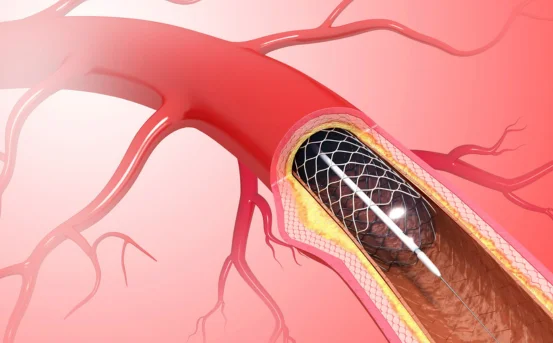Hydrocephalus is a medical condition characterized by the buildup of cerebrospinal fluid (CSF) in the brain’s ventricles, which can lead to increased intracranial pressure and damage to brain tissues. If left untreated, hydrocephalus can result in permanent neurological damage, physical disabilities, or even death. The primary treatment option for this condition is surgery, which either diverts or regulates the excess fluid to relieve pressure on the brain.
While the idea of brain surgery may sound overwhelming to patients and their families, benefits of hydrocephalus surgery has been proven to be highly effective and life-changing. It not only relieves physical symptoms but also protects long-term neurological function and improves the quality of life.
Benefits of Hydrocephalus Surgery
Relief from Symptoms of Intracranial Pressure
One of the most immediate and noticeable benefits of hydrocephalus surgery is the relief from symptoms caused by elevated intracranial pressure. The accumulation of fluid can lead to a range of debilitating symptoms such as severe headaches, nausea, vomiting, blurred vision, and drowsiness.
Following surgery, whether through a ventriculoperitoneal (VP) shunt or endoscopic third ventriculostomy (ETV), many patients experience:
- Reduced frequency and intensity of headaches
- Improved alertness and cognitive clarit
- Alleviation of visual disturbances
- Decreased episodes of nausea and vomiting
These changes are often apparent within days, dramatically improving the patient’s comfort and ability to function.
Protection of Brain Tissue from Damage
When cerebrospinal fluid accumulates unchecked, it exerts pressure on the surrounding brain tissue, potentially leading to damage that may be irreversible. Prolonged compression can result in reduced brain volume, loss of grey matter, and compromised neural pathways that are essential for speech, movement, memory, and behavior.
Surgical intervention effectively halts this process by:
- Draining excess CSF
- Reducing pressure within the skull
- Allowing the brain to regain its normal shape and function
By protecting the brain from ongoing harm, hydrocephalus surgery offers long-term benefits that go beyond immediate symptom relief.
Improved Development in Children
Hydrocephalus is commonly diagnosed in infancy or early childhood, and without timely treatment, the condition can severely affect brain development. The first few years of life are crucial for the formation of cognitive, language, and motor skills. Elevated pressure on a child’s developing brain can delay or even halt progress in these areas.
After surgery, many children show:
- Catch-up growth in head circumference
- Enhanced physical milestones such as sitting, walking, and balance
- Improvements in speech and language skills
- Greater social interaction and responsiveness
Early surgical treatment can help the brain grow more normally and enable the child to reach their developmental potential.
Restoration of Mobility and Motor Function
In both children and adults, hydrocephalus can interfere with mobility and coordination. This is especially true in normal pressure hydrocephalus (NPH), a condition affecting older adults, where patients often develop a slow, shuffling gait, poor balance, and frequent falls.
Surgical treatment—most commonly VP shunt placement—can restore proper fluid dynamics and relieve pressure on the parts of the brain that control movement.
Patients frequently report:
- Improved walking speed and posture
- Better balance and reduced risk of falling
- Greater independence in daily activities
- Enhanced muscle control and strength
Mobility restoration plays a significant role in improving a person’s independence and quality of life, especially in the elderly.
Enhanced Cognitive and Mental Clarity
Hydrocephalus, particularly in adults, can lead to cognitive symptoms that mimic dementia—memory loss, confusion, difficulty concentrating, and poor decision-making. These symptoms are often misdiagnosed as Alzheimer’s or Parkinson’s disease.
After successful hydrocephalus surgery, especially in cases of NPH, patients often experience:
- Sharper memory recall
- Better concentration and focus
- Improved speech and communication skills
- Enhanced executive function (planning, decision-making, problem-solving)
These improvements can be transformative for both the patient and their family, restoring the ability to think clearly, work, and engage socially.
Resolution of Urinary Incontinence in Adults
Another common and distressing symptom of normal pressure hydrocephalus in older adults is urinary urgency or incontinence. This issue, often embarrassing and disruptive, stems from the pressure on brain areas that regulate bladder control.
Following VP shunt placement:
- Many patients regain bladder control
- The frequency of urinary accidents decreases
- The need for catheterization or adult diapers is reduced
This not only improves hygiene and comfort but also restores personal dignity.
Reduction in Frequency of Hospital Admissions
Untreated hydrocephalus can lead to frequent hospital visits for symptoms like seizures, vomiting, and confusion. Surgery helps reduce these complications, leading to fewer emergency room visits and admissions.
This, in turn, reduces healthcare costs and minimizes the emotional and physical stress associated with recurrent medical crises.
Improved Emotional and Social Well-Being
Living with untreated hydrocephalus often leads to emotional distress, isolation, anxiety, and depression. Children may feel different from their peers. Adults may struggle with identity loss or feel dependent on caregivers.
Surgery improves:
- Confidence and self-esteem in children and teens
- Independence and autonomy in adults and the elderly
- Participation in school, work, and social activities
- Overall emotional and psychological resilience=
Families also report feeling less anxious and more hopeful about the future.
Lower Risk of Complications Associated with Delay
The longer hydrocephalus goes untreated, the higher the risk of permanent brain damage, developmental delay, and disability. Surgery provides a clear path toward reducing these risks and preventing a decline in function.
Early intervention often results in better outcomes, fewer revisions, and more predictable recovery.
Long-Term Management with Modern Technology
While hydrocephalus often requires lifelong monitoring, the surgical solutions available today are more reliable than ever. Programmable shunts, anti-siphon devices, and minimally invasive endoscopic techniques have improved outcomes and reduced complication rates.
Patients can live full, active lives with:
- Ongoing monitoring from neurosurgeons
- Regular imaging to check for shunt function
- Timely adjustments in case of malfunction
With a proper care plan, most individuals with hydrocephalus live independently and pursue normal education, careers, and families.
Conclusion
Hydrocephalus surgery is not just a medical intervention—it’s a life-saving and life-enhancing procedure. Whether in infants born with the condition or adults who develop it later in life, the benefits of timely surgical treatment are profound and far-reaching. From relieving pressure on the brain and restoring mobility to protecting cognitive function and emotional health, the impact of surgery cannot be overstated. It enables children to grow, adults to thrive, and seniors to reclaim their independence. While challenges may remain, the opportunity for a better quality of life is one that hydrocephalus surgery consistently delivers. If you or a loved one has been diagnosed with hydrocephalus, consulting a qualified neurosurgeon and exploring surgical options early can make all the difference in outcome and recovery.























